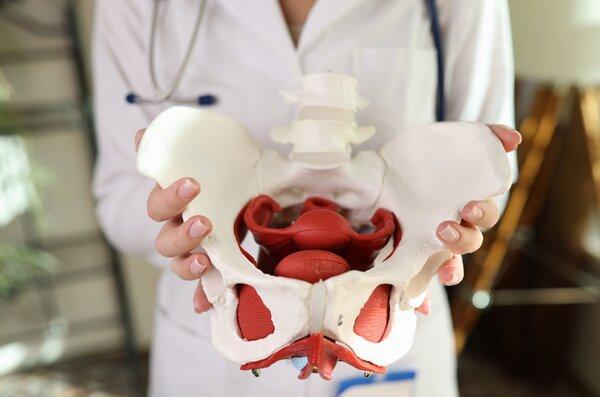The Hidden Dangers of the “Just in Case Pee” for Your Overactive Bladder and Pelvic Floor Health

(Note: Some of the links in this post are affiliate links, and we will be compensated when you make a purchase by clicking through our links at no additional cost to you.)
Are you one of the many individuals who constantly feel the urge to rush to the bathroom, even if you’re not sure you really need to go? Does the fear of not finding a restroom when you’re out and about push you to take those “just in case” bathroom breaks? If you’re nodding your head in agreement, this blog post is tailored just for you. We’ll delve into the often overlooked consequences of the “just in case pee” and explore how it affects your pelvic floor health.
Understanding the “Just in Case Pee”
You’ve likely been there – you’re about to head out for a social gathering, shopping trip, or even a long car ride, and the thought crosses your mind, “What if I need to use the restroom later?” This leads to a preemptive visit to the bathroom before leaving your home. While it may seem like a harmless habit, it’s important to understand that this “just in case pee” can have significant implications for your bladder and pelvic floor health.
The Brain-Bladder Connection
To comprehend why the “just in case pee” isn’t ideal for your bladder, it’s essential to grasp the brain-bladder connection. Your brain and bladder communicate with each other to determine when it’s time to empty your bladder. When your bladder reaches a certain level of fullness, it sends signals to your brain, prompting you to seek a restroom.
However, when you repeatedly empty your bladder “just in case,” you disrupt this natural signaling process. Your brain receives mixed messages because it doesn’t have a chance to recognize when your bladder is genuinely full. Consequently, this can lead to an overactive bladder, making you feel like you need to visit the restroom more frequently than necessary.
The Impact on Your Pelvic Floor
The consequences of the “just in case pee” extend beyond your bladder. It can also affect the health of your pelvic floor, an often-underappreciated set of muscles that play a crucial role in supporting your core and bladder function.
When you habitually rush to the restroom, you might inadvertently strain your pelvic floor muscles. This can result in a tight and overworked pelvic floor, leading to symptoms such as constant pelvic tension and the sensation of needing to pee even when your bladder isn’t full. Additionally, gripping your pelvic floor muscles can exacerbate urinary urgency and incontinence issues.
Breaking Free from the “Just in Case Pee”
Now that you understand the potential harm caused by the “just in case pee,” you’re probably wondering how to break free from this habit and improve your pelvic floor health. Fortunately, there are practical strategies you can implement to regain control and support your bladder and pelvic floor.

1. Mindful Awareness
The first step is to become mindful of your bathroom habits. Pay attention to the urge to use the restroom and try to distinguish between genuine signals from your bladder and the “just in case” feeling driven by anxiety. By recognizing when you genuinely need to go, you can start retraining your brain-bladder connection.
2. Bladder Retraining
Bladder retraining is a method that helps restore your bladder’s natural signaling mechanism. Instead of rushing to the bathroom at the first hint of urgency, try to delay your restroom visits gradually. Start with small increments of time and gradually increase the duration between trips. Over time, this can help your bladder regain its ability to send accurate signals to your brain.
3. Pelvic Floor Exercises
To maintain a strong and healthy pelvic floor, consider incorporating pelvic floor exercises into your daily routine. Exercises like Kegels and other pelvic floor strengthening exercises can help you improve pelvic muscle strength and reduce tension. However, it’s crucial to perform these exercises correctly to avoid overexertion. Consulting a pelvic floor physical therapist can provide guidance tailored to your needs.
4. Breathing and Posture
Breathing and posture play a vital role in pelvic floor health. Learning how to breathe diaphragmatically and maintain good posture can help reduce unnecessary pressure on your pelvic floor muscles. It’s surprising how these seemingly simple adjustments can have a significant impact on your overall well-being.
In summary, the “just in case pee” is a habit that many people adopt out of convenience or anxiety. However, it can disrupt the natural brain-bladder connection and contribute to an overactive bladder, leading to frequent restroom visits. Additionally, it can place undue stress on your pelvic floor muscles, causing discomfort and urinary symptoms.
Taking steps to break free from the “just in case pee” habit and prioritize your pelvic floor health is crucial. By becoming mindful of your bathroom habits, implementing bladder retraining, performing pelvic floor exercises, and focusing on proper breathing and posture, you can support your bladder and pelvic floor, ultimately improving your overall quality of life.
Remember, your pelvic floor will thank you for putting an end to the “just in case pee.” It’s time to take control and regain confidence in your bladder function, one step at a time.






